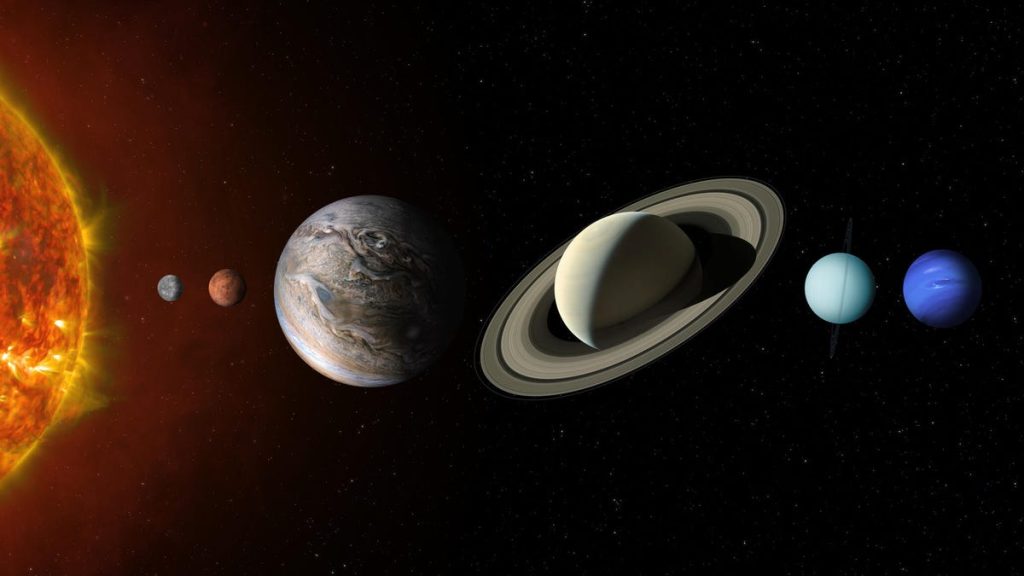A celestial spectacle is gracing the night skies of early 2025: a planetary parade featuring six planets – Venus, Mars, Jupiter, Saturn, Neptune, and Uranus – all visible simultaneously. This captivating astronomical event, continuing until late February, offers both casual stargazers and seasoned astronomers a chance to witness the grandeur of our solar system. While Mars, Venus, Jupiter, and Saturn can be readily observed with the naked eye, the distant ice giants Neptune and Uranus require optical aids like telescopes for viewing. Optimal viewing for Northern Hemisphere observers is just after sunset, around 8:30 p.m. local time, with some planets remaining visible until midnight or later, depending on location and planet.
This planetary parade stands out due to its extended duration, a result of the planets’ favorable positioning. The alignment will persist nightly until the final week of February, providing ample opportunities for observation. As a bonus spectacle, Mercury will briefly join the celestial gathering in late February, transforming it into a seven-planet parade, encompassing all solar system planets visible from Earth except our own. Spotting all seven planets might prove challenging, given the proximity of Saturn, Mercury, and Neptune to the setting sun, but their presence will complete the planetary lineup. As March approaches, Mercury, Saturn, Neptune, and shortly thereafter Venus, will be lost in the sun’s glare, leaving Jupiter, Mars, and Uranus to dominate the night sky until the next planetary alignment occurs.
The planetary parade presents a dynamic arrangement across the sky. Around 9:30 p.m. local time, Mars, Jupiter, and Uranus grace the southeastern sky, while Neptune, Venus, and Saturn occupy the southwestern horizon. This configuration offers a captivating vista for observers throughout North America. Locations across the US, Canada, and Mexico are well-placed to witness this extended celestial event. Verification from observatories across these regions confirms the visibility of all six planets, regardless of geographic position within North America.
The optimal viewing period for this planetary parade extends from January 21 to February 21, with the week of January 29 presenting the most favorable conditions. Coinciding with the new moon, this period offers minimized light pollution, enhancing the visibility of the fainter planets – Neptune, Uranus, and Saturn. The new moon’s shadowed presence will darken the night sky, creating a more distinct backdrop against which to observe these more elusive celestial bodies.
The planets become visible immediately after sunset, providing a relatively short window of a few hours before Venus, Saturn, and Neptune sink below the horizon. This timing holds constant across all locations, ensuring a synchronized viewing experience regardless of geographical position. The brief seven-planet parade in late February requires observing at sunset, adding a layer of difficulty due to the sun’s lingering light.
While four of the planets (Venus, Mars, Jupiter, and possibly Saturn) are visible to the naked eye under ideal conditions, observing Neptune and Uranus requires specialized equipment. A telescope with at least an 8-inch aperture and magnifications of 50x and 150x are recommended for viewing Uranus and Neptune, respectively, ideally revealing their rings. Saturn, with its majestic rings, can be observed at 25x magnification. Standard stargazing practices, such as seeking dark locations away from city lights and choosing clear nights with minimal cloud cover, apply to enhance the viewing experience. Observing the seven-planet alignment in late February requires extra precautions due to the planets’ proximity to the sun, including using appropriate eye protection.
Locating the planets, especially the fainter and closely positioned ones, can be facilitated by various tools. Stellarium’s website and Time and Date’s Night Sky Map provide valuable information regarding planetary positions relative to each other. Mobile apps like Star Walk 2 and Stellarium’s own app for Android and iOS offer portable guidance for locating celestial objects, making them valuable companions for observing the parade.
The term “planetary parade,” while popular among enthusiasts, lacks formal astronomical standing. It describes the visual alignment of four or more planets in the night sky, a phenomenon officially termed “planetary alignment.” This latter term sometimes causes confusion, as it can be interpreted as planets perfectly lining up on one side of the sun, a scenario physically impossible. While images often depict this idealized alignment, the reality involves planets being on the same side of the sun but with varied distances and orbital positions. In common usage, “planetary parade” and “planetary alignment” are often used interchangeably, both referring to the simultaneous visibility of several planets in the night sky, even if they are not particularly close to each other in their respective orbits. This celestial spectacle allows us to perceive a visual connection between distant worlds within our solar system.










